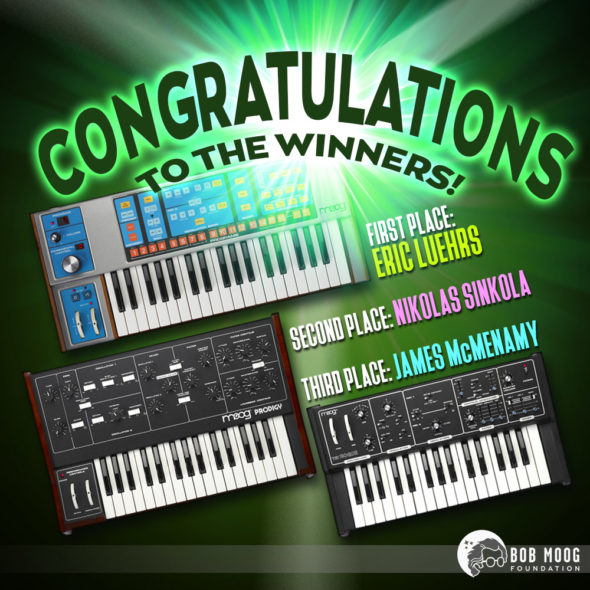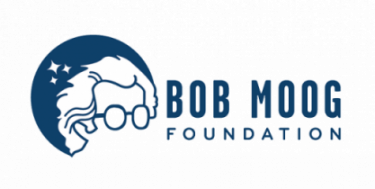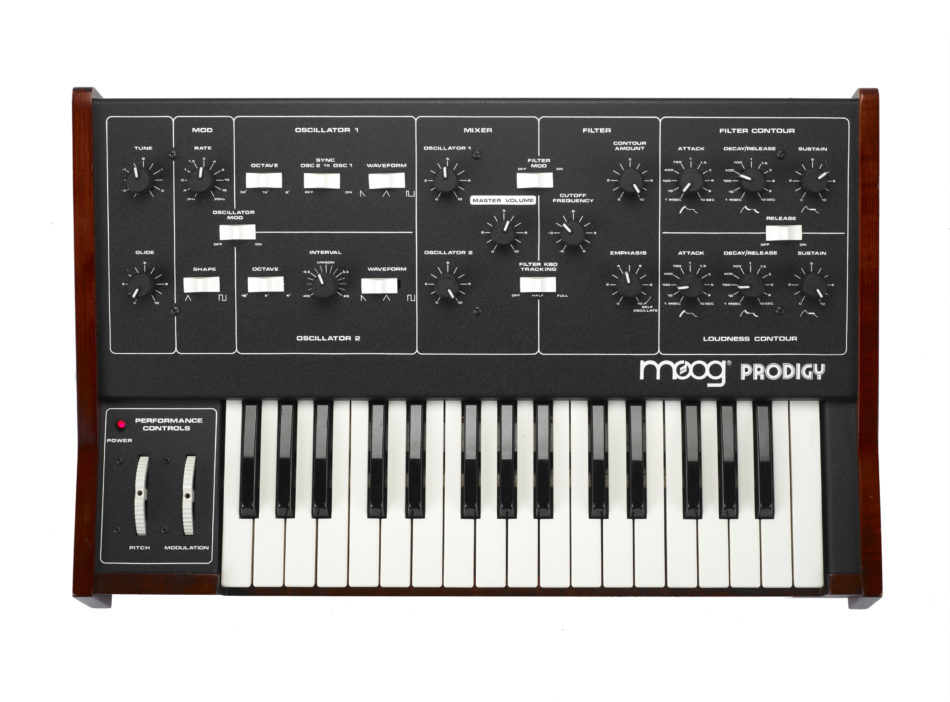One Ticket Gets You A Chance at Three Different Vintage Synths
THE 2020 TRIFECTA RAFFLE HAS ENDED. Many thanks to the 1,133 participants from 42 countries who purchased 2,283 tickets! The winner will be announced on Friday, October 2, 2020 via our website and social media outlets.
Big thanks to all who supported this raffle and in turn, are helping the Bob Moog Foundation navigate these challenging times!
UPDATE: Congratulations to the three winners of the 2020 Moog Trifecta Raffle:

If you missed out on the raffle but would like to support the Bob Moog Foundation’s work, please donate here.
2020 has been no ordinary year, and our new raffle is no ordinary raffle. Instead of offering one vintage Moog synthesizer with a single winner as we’ve often done in the past, we are offering three beautiful, vintage Moog synths that will go to three lucky winners.
We are excited to announce our 2020 Trifecta Raffle featuring a Moog Rogue, a Moog Prodigy, and a Moog Source. The synthesizers being offered have been fully restored and are in excellent technical and physical condition. Together their collective worth is nearly $7,000.
The raffle begins at 12:01am (ET) on August 31, 2020 and ends on
September 28, 2020 at 11:59pm (ET) or when all tickets are sold.
Tickets are $25 each, 5 for $100, 12 for $200, and 35 for $500.
The raffle is open internationally.
All proceeds benefit the Foundation’s projects: Dr. Bob’s SoundSchool, the Bob Moog Foundation Archives, and the Moogseum. Only 4,500 tickets will be sold.
Tickets can be purchased here
Be sure to review the Rules & Regulations prior to entering.
The raffle will offer three separate prizes to three separate winners: first prize, Moog Source, serial number 2628 (valued at $2,800); second prize, an updated Moog Prodigy, serial number 3078 (valued at $2,500); and the Moog Rogue, serial number 3674 (valued at $1,500) as third prize. The Moog Source and Moog Rogue were expertly restored by Tone Tweakers. The Prodigy was expertly restored by lauded technician Wes Taggart. and has been updated with Synthrotek MST MIDI-to-CV Converter.
All three synthesizers share the robust Moog build and rich sound quality as well as a shared technical lineage rooted in the legendary Minimoog, which is widely known as the most iconic, archetypal analog synthesizer of all time. They were all built at Moog Music’s Buffalo, NY factory.
First Prize – The Moog Source
Produced between 1981-1985, the two oscillator, multi-processor controlled Moog Source boasted a host of expanded capabilities when compared to the other two synthesizers being offered in the raffle, including two sequencers, an arpeggiator, sample and hold, and 16 memory locations for recalling synth patches.
Here’s what BMF friend, supporter, and Board of Advisor member, and longtime synthesizer aficionado Erik Norlander says about the Source:
“The Source is the only other Moog synth that comes close to having the “weight” of the Minimoog. Despite the digital control (which is super handy, of course), the audio path remains big and silky, very Minimoog-like in that way. The low end is big and punchy like the Mini, and that makes The Source ideal for bass parts in particular. The packing is also quite cool. It’s a very small instrument and great for travel. But The Source also built like a tank — especially the custom encoder they designed for the Source makes you feel like you’re operating a piece of precision astronomy equipment and not a simple data wheel as on modern synths.”
The Source has been used by Tangerine Dream, Jan Hammer, Depeche Mode, Devo, Vince Clarke, New Order, Ultravox, Josh Wink, Front Line Assembly, Moog Cookbook, Kitaro, Imperial Drag, The Cars, Phish, The Rentals, King Crimson, Blur, and Gary Numan.
Enter to Win the Source Here
Second Prize – The Moog Prodigy
The two oscillator Moog Prodigy, produced between 1979-1984, offers saw, triangle, and pulse waveforms, the famous 24dB Moog lowpass filter, ADS/ASR envelope possibilities, portamento, pitch and mod wheels, and a two and a half octave keyboard bed with octave switching capabilities. The LFO with square or triangle waveforms, routes to the filter, oscillators, or both.
The Prodigy being offered has been updated with a Synthrotek MST MIDI-to-CV Converter.

Say hello to the most prodigious Moog Prodigy ever! The addition of the Synthrotek MST module brings this vintage Moog synth into the digital age. The modification and restoration were performed by none other than Wes Taggart, one of the very best techs in the vintage analog synth universe.
Not only can you control this Prodigy from a MIDI keyboard or sequencer, you can route Velocity, Aftertouch or Mod Wheel MIDI messages directly to the cutoff frequency of the Prodigy’s world-famous Moog filter.
Trust us, there is NOTHING like adding dynamic response to any vintage synth, especially a Moog!
As if all this weren’t enough, the MIDI In on the Synthrotek interface drives its CV and Gate outs, so you can layer another vintage synth with this one-of-a-kind Prodigy via MIDI. Note: the Gate is a positive signal, so you’ll need an invertor or S-trig connection to use another Moog with this bad boy. Note also: the MIDI Out in this implementation functions as a MIDI Thru. The Prodigy strictly functions as a MIDI receiver via the MST.

The Prodigy is used by Überzone, Cirrus, Astral Projection, Fatboy Slim, Depeche Mode, 808 State, Prodigy, Howard Jones, Blur, The New Deal, Solaris, Jimmy Edgar, and the Hippos.

Enter to Win the Prodigy Here
Third Prize – The Moog Rogue
Often described as “small but mighty”, this two-oscillator bass synth was Moog’s answer to making synthesis available to a wider audience. It was designed to be a lead instrument in a multi-synthesizer rig. It offers an LFO, Low Pass Filter, ASR contouring, white noise, and a two and a half octave range.
Erik Norlander makes excellent use of the Rogue in many of his compositions. Here’s his insight into the Rogue’s sonic powers:
“The Rogue is often my secret weapon. Its sound is clear and hi-fi, and it fits in a mix amazingly well, especially when a Minimoog sounds too “big,” as they can do. The Rogue’s modulation section is astoundingly flexible for such a simple interface. The results can be pretty deep. You can get lost for hours creating deep sample-and-hold grooves between the two oscillators, noise generator and self-resonating filter. I used the Rogue to great effect on my long-form Berlin School piece, “Adrift on the Fire Seas of Orion’s Shield” and on the title track of my Threshold album in the LFO-driven breakdown section. I can always pick out that synth in an instant.”
The Rogue is used by Peter Gabriel, Add N To (X), 808 State, Stereolab, Mr. Oizo and KMFDM.
Enter to Win the Rogue Here
Raffle ends on September 28th at 11:59pm (ET) or when all 4,500 tickets are sold.






















